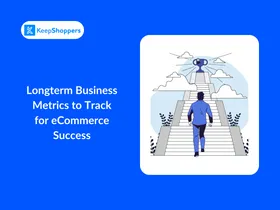Top Pricing Strategies for Your Shopify Store With Examples
Published February 28, 2022

AI Summary
A Shopify pricing strategy is a technique used to set the prices for the products and services sold within an online store, and a well-developed pricing strategy sets a price that is both profitable for the company and fair to the customer. There are a few factors that go into setting prices, including production costs, market conditions, and competition.
Considering these factors, we’ll discuss the best low-cost strategies for your Shopify store.
Shopify Pricing Strategies for Untapped Growth Potential
1. Price Skimming
Price skimming is a pricing strategy whereby a newly launched product is priced higher than an established product. With price skimming, a business aims to recover its development costs as quickly as possible. As the product’s popularity increases, the price is gradually reduced over time, initially covering the development costs of the product and then cashing in on the hype produced by satisfied customers.
A good example of price skimming is the release of the DVD player. Back in the early 90s, development costs of DVD players were high, so companies recuperated their initial investments by pricing newly released units at the cost of up to $1,000. Then, as more and more DVD players were sold and more manufacturers entered the fray, the price of units reduced dramatically.
2. Penetration Pricing
In contrast to price skimming, penetration pricing sets a low initial price for a product in order to attract more customers and gain a greater proportion of the market share. The goal is to eventually raise the price to cover costs and make a profit. Penetration pricing is often used when a company is introducing a completely new product or if a product is being released into a highly competitive market.
The streaming services that Netflix offers are a great example of penetration pricing. Over time, as the platform has become more popular and their customer base has grown, Netflix has progressively raised their prices. Additionally, to ensure they target the right customers, the platform has also added more features at a higher cost for those users willing to pay more for premium services.
3. Value Pricing
Value pricing is a technique used by businesses to set prices that will cause a higher profit margin than what would be generated by using cost-based pricing. The goal is to find the price point at which demand for the product or service equals the available supply. This can be done through market research and analysis of competitor pricing.
The diamond market is a perfect example of value pricing. Despite more and more consumers recognizing that the price of a diamond is artificially inflated—there being no real shortage of diamonds—the perceived value is still high, resulting in customers paying a premium price for a product that is in high demand.
How to Price Your Shopify Store’s Products Correctly
Pricing your products correctly is all about portraying the value of your products in the right light. A product that is priced too low may make it appear cheap and will dissuade willingly high-paying customers. In contrast, pricing a product too high will scare off lower-income customers that are only willing to pay a perceivably fair price.
With this in mind, pricing optimization is integral to the success of your Shopify store. To help you hit a happy medium between affordable but not undervalued, use an advanced AI tool that integrates directly with your Shopify store, such as OP's Pricing Optimization app.





